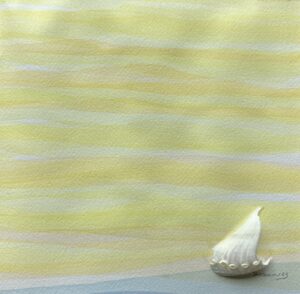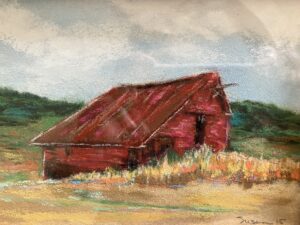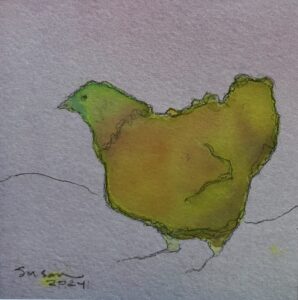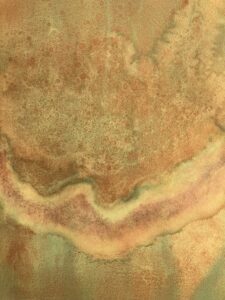Writing class “flash” prompt; 10 minutes.
The stubbly grass dusted with overnight snow
Powdered sugar on a crumb coffee cake
The sun struggling for freedom against a pall of clouds
A tongue of light darting out for a taste
Writing class “flash” prompt; 10 minutes.
The stubbly grass dusted with overnight snow
Powdered sugar on a crumb coffee cake
The sun struggling for freedom against a pall of clouds
A tongue of light darting out for a taste


I know it’s not the same
That a dog is not a person
But when my dog
(Elderly, diabetic, so diminished)
Unable once again to rise up from his bed
His legs spayed uselessly akimbo
Raised his eyes to mine
I knew what he was saying
And a few days later
On the last day
When he did rise and stagger to me
And laid his forehead against my leg
I knew what he was saying
There was a large statue of Mary, the Blessed Mother, in the main hallway, and smaller statues of Mary in all the classrooms. It was the custom to keep offerings of fresh flowers in front of these shrines. Not from the florist, but from people’s gardens.
Early in my second-grade career, I wanted to partake in this tribute. As I waited at the school bus stop one day, I saw my chance. There was an empty lot nearby that was abloom with what I thought were the most marvelous flowers. My family having recently moved to this suburb from the city, I had no garden and had never seen flowers growing in such abandon — tiny, brilliant yellow, arrayed up-and-down on long bristly stems, looking like brooms that a witch in a fairy tale might use. Witches held no negative meaning for me, so I meant no disrespect to Mary. (I now know such brooms have a a name: “besoms”.)
Somehow — I wouldn’t have had scissors nor a knife — I pulled together an armload of flowers and hauled it onto the bus. The theatrical shrieks from the other students began almost immediately. Seems that my beautiful flowers were called “goldenrod” and no one liked them because they made you sneeze.
In my mind’s eye, I see little-girl me, watching my teacher stick my offering — which had already begun to wilt — into a large vase. She scurried out to the hallway statue and, over her shoulder, told me not to bring wildflowers to school anymore.


A truncated version of this, titled “The”, appeared on VineLeavesPress.com (“50 Words Give or Take”).
As a little child, I felt what I now know to be awe and excitement when the little shapes that clustered on the pages of the simple books my parents read aloud to me, began to fall into meaning. The earliest word I recognized was “the”. It seemed to float serenely amid a sea of angular and rounded shapes. That realization was profound, and I was happy whenever and wherever I found my new word-friend. I was fortunate that the world of reading, as well as writing, opened quickly for me. When I entered first grade at age five, I already knew how to read.
Writing class assignment for the prompt “gift”.
Many husbands like to buy gifts of jewelry for their wives. Nothing remarkable about that, right? I may be biased, but here’s a lovely story about my husband and two such gifts to me
The first gift took place when my son Alex was leaving for college. That time is an emotionally fraught time for so many of us; it certainly was for me. I was full of conflict that September so many years ago, and very sad. I wanted to project confidence and enthusiasm and happiness. I was not confident and enthusiastic and happy, and I have come to know that Alex was not either.
But both of us put on a façade. Unconsciously, I think now, we were modeling such qualities for each other, perhaps to convince ourselves, like that cliché of “whistling past the graveyard” that all would be well. An additional factor for me (not for him, though) was that Alex’s 18th birthday would coincide with his departure. The outside world, our culture, would see him as an adult, but he was still my little boy. As I said, I was conflicted and sad.
Into this morass stepped my husband John. For Alex’s birthday, John gave me a gift: a pair of stud earrings, small textured balls of white gold imbedded with tiny tiny tiny sapphires — Alex’s September birthstone; nine in each earring.
Need I say more? I wear the earrings often. I’m wearing them today! See? They are so discrete, yet they convey a powerful and very personal message. They bring me back to a very tricky time, yet they free me to reflect on where I am now, where Alex is and where we are.
As you see me wearing these earrings today, you can also see an additional earring — another stud featuring a precious stone, this time a small emerald. And that’s the second gift.
When Dad died seven years ago, I was shipwrecked. It was no surprise that he had died– age 90, so frail — but still, it was utterly shocking to me. I grieved mightily. One day, when I felt at rock-bottom in my loss, John gave me a gift … out of the blue … a very simple pair of emerald earrings, the emerald being Dad’s May birthstone. The tears I wept over this gift were tears of joy. They began to wash away the bitter tears that had been threatening to drown me.
I often wear the sapphires and one emerald, or the two emeralds and one sapphire. Having three ear piercings gives me a lot of freedom! And it’s fun to have my son and my father with me.
And sometimes I go wild with one emerald and one sapphire and one amethyst, this last from the pair of studs that I bought as a gift to myself many years ago, at another very trying time in my life. Not only is the amethyst my February birthstone, it’s Dad’s deathstone, if you know what I mean.
Hmmmm. What do you think about the concept of a deathstone?
